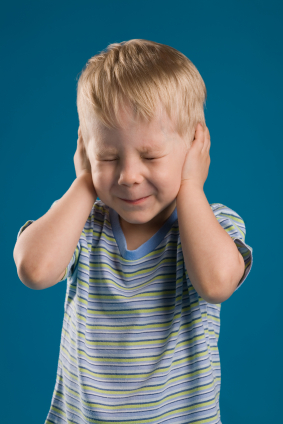Iron Deficiency Linked to Psychiatric Disorders in Children
Iron deficiency is the most prevalent nutritional deficiency in industrialized countries and can cause problems with cognitive and intellectual development. New research published in the journal BMC Psychiatry shows that it has psychiatric ramifications as well. Children and adolescents with iron deficiency anemia are at greater risk for psychiatric disorders, including depression, bipolar disorder, anxiety, and autism.
Iron supplementation should be implemented in children with iron deficiency anemia in order to prevent any possible psychiatric repercussions, and similarly, psychiatrists should check iron levels in young patients with psychiatric disorders.
Iron provides myelin for white matter in the brain and plays a role in the function of neurotransmitters.
Longitudinal Trajectory of Childhood Bipolar Disorder
Most children recover from an episode of bipolar disorder after a considerable period of time, but the majority eventually relapse. At the 2013 meeting of the American Academy of Child and Adolescent Psychiatry (AACAP), Boris Birmaher of the University of Pittsburgh presented new data on the long-term prospective course of bipolar disorder in 255 children with bipolar I, 30 children with bipolar II, and 153 children with bipolar NOS (not otherwise specified), who together had an average age of onset of 9.3 +/- 3.9 years. The children participated in the study for an average of 8 years. Most of the children (81.5%) recovered from their episode, but only after an average of 2.5 years of follow up treatment. Yet 62.5% of those who recovered experience a recurrence after an average of 1.5 years.
Editor’s Note: It takes a long, long time to achieve recovery, and longer for bipolar NOS (more than 2 years on average) than for either Bipolar I or II (about 1.8 years). However, the high rate of relapse within 1 to 2 years is equally disturbing. These data are similar to those in many other prospective follow up studies of children, and suggest that it is important for parents to be aware that this illness is difficult to treat, and good results within weeks are not likely to be the norm. At the same time, 43% of the children with a bipolar diagnosis eventually achieved euthymia (wellness) in the longer term, so there is cause for some optimism.
Four Trajectories in Children with Bipolar Illness
Birmaher described four different long-term,trajectories observed over an average of 8 years of follow up with 438 children with bipolar disorder.
- Predominately euthymic (24%)
- Ill early then much improved (19%)
- Mild to moderately ill—euthymic only 47% of the time (34.6%)
- Predominantly ill—euthymic 11.5% of the time (20.3%)
Explaining Wellness
The predominantly well group (1) was associated in a univariate analysis with a later onset of illness, higher socio-economic status, less conflict, fewer stressors, less sexual abuse, fewer anxiety and ADHD comorbidities, and less medication (including stimulant use). In a multivariate analysis, this group was independently associated with less severe depression/mania, less suicidal ideation, less substance use, less sexual abuse, and less family history of mania and substance abuse.
This group had the best functioning, almost to 80 on the Children’s Global Assessment Scale (C-GAS). In comparison, despite considerable time euthymic for groups 2 and 3, these children still had considerable functional impairment, in the realm of 65 on the C-GAS scale. Even in Group 1, about half of the children had low C-GAS scores.
Birmaher suggested the importance of trying to find ways to delay the onset of the illness (to graduate more children into the good prognosis group) and allowing them time to develop socially and educationally and graduate from high school. Potential preventive strategies could include omega-3 fatty acids, more time spent exercising, good sleep hygiene, family focused therapy (FFT), dialectic behavior therapy, treating subsyndromal depression, and even treating parents with mood disorders to complete remission (which has been shown to improve behavioral health in offspring).
Editor’s Note: As this editor Post, Chang, and Frye wrote in the Journal of Clinical Psychiatry in 2013, beginning to study the effectiveness of these kinds of early primary and secondary prevention strategies in children who can now be readily identified clinically as at risk for a mood disorder, should be given the highest priority.
Children who have at least one parent with a bipolar or unipolar disorder, some further environmental risk factors (such as adversity in early childhood), and early symptoms of depression, anxiety, or prodromal bipolar disorder are at very high risk for bipolar disorder, and there is an urgent need for randomized studies (even open ones) of safe potential preventive strategies for these children.
Omega-3 fatty acids in particular have a strong record of safety, compelling rationale for use in bipolar disorder, and have already been shown to have significant preventive effects in decreasing the transition from early prodromal psychosis to full-blown schizophrenia.
Inflammatory Markers of Bipolar Illness Course
 People with bipolar disorder often show signs of inflammation. These could eventually help clarify diagnosis, illness activity, and treatment response, and predict illness progression. Previous studies have shown increases in c-reactive protein (CRP), interleukin-6 (IL-6), and tumor necrosis factor-alpha (TNF-alpha) in adults with mood disorder. These high levels tend to improve with medications, are related to illness severity, and are also related to manic and mixed states.
People with bipolar disorder often show signs of inflammation. These could eventually help clarify diagnosis, illness activity, and treatment response, and predict illness progression. Previous studies have shown increases in c-reactive protein (CRP), interleukin-6 (IL-6), and tumor necrosis factor-alpha (TNF-alpha) in adults with mood disorder. These high levels tend to improve with medications, are related to illness severity, and are also related to manic and mixed states.
At the 2013 meeting of the American Academy of Child and Adolescent Psychiatry (AACAP), Ben Goldstein reported on a study that examined levels of TNF alpha, IL-6, and high sensitivity CRP (hsCRP) in 123 adolescents with an average age of 20.4 years, who had been ill for an average of 12.7 years.
CRP levels in adolescents with bipolar illness were equivalent to those with rheumatoid arthritis, and much higher than healthy controls. In children with bipolar disorder, higher levels of CRP were related to more time symptomatic. High hsCRP was related to lower socio-economic status and to substance abuse disorders.
Increases in IL-6 were linked to a longer time to achieve remission and more weeks depressed. High IL-6 was related to duration of illness, positive family history of substance use, and family conflict.
High TNF alpha was related to low socioeconomic status (SES), self-injury, suicidal ideation, and positive life events.
Goldstein said studies of these markers could eventually lead to therapeutic advances, but the process would be long and would require several steps: proof of concept studies, prospective validation studies in independent samples, and demonstration of clinical gains over standard predictive markers, culminating in enhanced patient care and outcome through better, faster prediction of response.
Editor’s Note: Ideally clinicians could jump ahead by immediately attempting to determine whether adding a medication with direct anti-inflammatory effects could enhance therapeutic effects in children with elevated inflammatory markers. Treating inflammation could also theoretically help prevent cognitive deterioration and decrease the considerable risk for cardiovascular dysfunction in patients with bipolar disorder.
Worsening Comorbidities Relate To Adverse Bipolar Outcomes
 Many children with bipolar disorder also present with other comorbid Axis I psychiatric illnesses. Now it seems that the worsening of these comorbidities, such as attention-deficit hyperactivity disorder (ADHD) or an anxiety disorder, can signal a more difficult course of bipolar illness itself. At a symposium on the course of bipolar disorder in children at the 2013 meeting of the American Academy of Child and Adolescent Psychiatry (AACAP), Shirley Yen from Brown University discussed findings on comorbidities of childhood onset bipolar disorder from COBY, the Collaborative Child Bipolar Network. Upon study entry, 60% of children with bipolar disorder also had ADHD, 40% had oppositional defiant disorder (ODD), 39% had an anxiety disorder, 12.5% had both oppositional defiant disorder and a conduct disorder, and 9% had a substance abuse disorder.
Many children with bipolar disorder also present with other comorbid Axis I psychiatric illnesses. Now it seems that the worsening of these comorbidities, such as attention-deficit hyperactivity disorder (ADHD) or an anxiety disorder, can signal a more difficult course of bipolar illness itself. At a symposium on the course of bipolar disorder in children at the 2013 meeting of the American Academy of Child and Adolescent Psychiatry (AACAP), Shirley Yen from Brown University discussed findings on comorbidities of childhood onset bipolar disorder from COBY, the Collaborative Child Bipolar Network. Upon study entry, 60% of children with bipolar disorder also had ADHD, 40% had oppositional defiant disorder (ODD), 39% had an anxiety disorder, 12.5% had both oppositional defiant disorder and a conduct disorder, and 9% had a substance abuse disorder.
The prevalence of most of these comorbid illnesses increased over time (e.g. anxiety disorder rates increased from 39% to 62%). The illnesses were also related to the time it took participants to achieve recovery (eight consecutive weeks well), and the time until a recurrence of a depressive or manic episode.
Increases in anxiety were linked to longer time to achieve recovery and a shorter time to a recurrence. Increases in ADHD were linked to a more rapid onset of a depressive recurrence. Increases in oppositional defiant disorder and conduct disorder had no relationship with either remission or recurrence. Increases in substance abuse disorders were linked to a longer time to recover from a manic episode. Thus, worsening of the comorbid conditions had definite consequences for both recovery and recurrence.
Irritable, Elated, And Combined Bipolar Subtypes in Children Are Similar
Research on early-onset bipolar disorder has often hinged on identifying the key characteristics of the disorder. At a symposium on the course of bipolar disorder in children at the 2013 meeting of the American Academy of Child and Adolescent Psychiatry (AACAP), Jeff Hunt of Brown University discussed findings from COBY, the Collaborative Child Bipolar Network. He described the course of illness in 446 children with bipolar disorder, including 10% who had irritability at baseline, 15% who had elated mood at baseline, and a majority (75%) who had both irritability and elation at baseline.
Most factors such as positive family history of bipolar illness and comorbidities including attention deficit hyperactivity disorder (ADHD) did not differ across the three groups. The three subtypes (irritable, elated, or mixed) did not remain stable, and most of the children eventually converted to the combined irritable and elated subtype. These data contrast with those of Ellen Liebenluft et al., who found that those with severe mood dysregulation or chronic irritability (but not other key characteristics of bipolar disorder) did not go on go on to receive a bipolar diagnosis and tended not to have a family history of bipolar disorder.
Gene Mutation Induces Bipolar-Like Symptoms
A mutation in a gene related to circadian rhythms may help explain bipolar disorder. Animals with a mutation in the gene, known as CLOCK, typically exhibit behaviors that mimic human mania, such as increased locomotor activity and decreased anxiety.
Stress can lead to depression in bipolar patients, so researcher Nicole Edgar et al. exposed animals with the mutated “manic” version of the CLOCK gene to unpredictable chronic mild stress. The stress brought about decreased locomotor activity and increased anxiety, mimicking a switch into depression. These data suggest that alterations in CLOCK genes may provide a useful model for both mania and depression.
The research was presented at the 2013 meeting of the Society of Biological Psychiatry, and the abstract (#471) can be found in the meeting supplement, Volume 73, Number 9S of the journal Biological Psychiatry.
In another abstract (#472) at the same meeting, researcher Wilbur Williams et al. reported that alterations in related clock genes (that result in decreases in the proteins CRY-1 and SIRT1) are associated with manic-like behavior that could be reversed using lithium. These data further suggest that clock genes may provide a useful model for bipolar disorder.
Emotional Abuse in Childhood is a Risk Factor for Bipolar Disorder
 Evidence is growing that stressful events in childhood are associated with an earlier onset of bipolar disorders and a more difficult course of illness than in those who did not experience this type of adversity. Monica Aas and colleagues in Norway have found for the first time that emotional abuse in childhood, especially before age five, also increases risk of bipolar disorder. This study indicates that while bipolar disorder has a genetic component, environmental factors also play a role.
Evidence is growing that stressful events in childhood are associated with an earlier onset of bipolar disorders and a more difficult course of illness than in those who did not experience this type of adversity. Monica Aas and colleagues in Norway have found for the first time that emotional abuse in childhood, especially before age five, also increases risk of bipolar disorder. This study indicates that while bipolar disorder has a genetic component, environmental factors also play a role.
In Norway and France, the research group surveyed patients with bipolar disorder and people in the general population about childhood trauma, including emotional abuse, sexual abuse, physical abuse, emotional neglect, and physical neglect. Among the almost 800 participants, patients with bipolar disorder were twice as likely as control participants to have experienced multiple types of trauma. However, emotional abuse was the only factor specifically linked to bipolar disorder. People who were emotionally abused in childhood were more than twice as likely to develop bipolar disorder in adulthood. Moreover, the more severe the emotional abuse, the more likely it was that a child would go on to develop bipolar disorder.
Among the adults with bipolar disorder, emotional abuse and sexual abuse in childhood predicted younger age of illness onset, more suicide attempts, more rapid cycling, and greater proneness to depression. Emotional or sexual abuse were linked to the most suicide attempts, and sexual abuse was linked to rapid cycling.
More trauma in childhood was also linked to affective instability in adults. Aas’ research was presented at the 14th International Congress on Schizophrenia Research.
Jules Angst on the Long-Term Progressive Course of Mood Disorders
At a symposium celebrating the retirement of Willem Nolen, a researcher who spent 40 years studying unipolar and bipolar disorder, from his position at Groningen Hospital in the Netherlands, his colleague Jules Angst discussed some recent findings. Angst is perhaps the world’s leading authority on the long-term course of unipolar and bipolar disorders based on his multiple prospective follow-up studies, some lasting 20-30 years.
The Sensitization-Kindling Model
Angst described evidence that supports the sensitization-kindling model of recurrent mood disorders, which this editor (Robert Post) described in 1992. Episodes tend to recur faster over time, i.e. the well interval between episodes becomes progressively shorter. While stressors often precipitate initial episodes, after multiple occurrences, episodes also begin to occur spontaneously (in the absence of apparent stressors).
This type of progressive increase in response to repetition of the same stimulus was most clearly seen in animal studies, where repeated daily electrical stimulation of the amygdala eventually produced major motor seizures (i.e. amygdala kindling). Daily electrical stimulation of rodents’ amygdala for one second initially produced no behavioral change, but eventually, minor and then full-blown seizures emerged. Once enough of the stimulated full-blown amygdala-kindled seizures had occurred, seizures began to occur spontaneously (i.e. in the absence of the triggering stimulation).
The analogy to human mood disorders is indirect, but kindling provides a model not only for how repeated triggers eventually result in full-blown depressive episodes, but also for how these triggered depressive episodes may eventually occur spontaneously as well.
Long-Term Treatment of Mood Disorders
Angst also discussed long-term treatment of mood disorders. He has found that long-term lithium treatment not only reduces suicides in patients with bipolar disorder, but also reduces the medical mortality that accompanies bipolar disorder.
Angst noted his previous surprising observations that in unipolar disorder, long-term maintenance treatment, even with low doses of tricyclic antidepressants, prevents suicide. Previously, researchers Ellen Frank and David Kupfer of Western Psychiatric Institute and Clinic at the University of Pittsburgh Medical Center had found that when patients with recurrent unipolar depression who had been stable for 5 years on the tricyclic antidepressant nortriptyline were blindly switched to half their original dose, about 90% rapidly relapsed into a new episode of depression. Their data helped establish the prevailing view that maintenance treatment with the full-dose regimen required to achieve a good initial acute response is also the optimal approach to long-term continuation and prophylactic treatment.
Angst found good results even at low doses, but his data may not be in conflict with Frank and Kupfer’s, as a person who responds well acutely to low doses may also be able to maintain good enough response to them to prevent recurrences in the long term.
Incidence of Bipolar Disorder in Adolescents Similar to Incidence in Adults
Angst also presented data from the Adolescent Supplement to the National Comorbidity Study (NCS-A), which analyzed interviews with approximately 10,000 adolescents (aged 13-17) in the US. He found a 7.6% incidence of major depression, a 2.5% incidence of bipolar I or II disorder, and a 1.7% incidence of mania. There was an even higher incidence of sub-threshold bipolar disorder, when there are not enough symptoms or a long enough duration of symptomatology to meet diagnostic criteria for bipolar I or II disorder. These data published by Merikangas et al. in 2009 provide clear epidemiological data that there is a substantial incidence of bipolar disorder in adolescents in the US, roughly similar to that seen in adults.
Bipolar Illness is Worse in the US than in Germany and the Netherlands
At a symposium celebrating the retirement of Willem Nolen, a researcher who spent 40 years studying unipolar and bipolar disorder, from his position at Groningen Hospital in the Netherlands, this editor (Robert Post) discussed progress in the treatment of bipolar disorder over the past 40 years. Despite the availability of lithium; many new mood stabilizers (carbamazepine, valproate, lamotrigine); and many atypical antipsychotics, all of which are anti-manic and some of which are antidepressant (quetiapine and lurasidone), there is still a very high rate of continued illness and treatment resistance, especially in the US.
In fact, research from the Bipolar Collaborative Network, a treatment research network including sites around the US (one run by this editor) and in Germany and the Netherlands, shows that almost everything about bipolar disorder is worse in the US. Americans have more genetic vulnerability because more of their parents have bipolar disorder, and they are more likely to have environmental vulnerability as a result of childhood adversity. Patients in the US also reported having had more stressors at the onset of their illness and more stressors prior to the last episode they had before entering the network at an average age of 40.
Age at illness onset is much lower in the US than in the Netherlands and Germany. About two-thirds of American patients had onset in childhood or adolescence (under 19 years), while only about one-third of the European patients in this study showed these early onsets.
The course of illness is also more difficult in the US. There is more anxiety, substance abuse, and medical comorbidity, and there are more episodes and more rapid cycling. All this resulted in more US patients than European ones who did not respond to naturalistic treatment in our treatment network despite being prescribed multiple medications.
The implication of these data is that we need a new and more concerted approach to bipolar disorder in the US, beginning with early diagnosis and treatment during childhood and adolescence, instead of the 10- to 15-year average delay that was typical about twenty years ago. The duration of the delay to first treatment with a drug to treat mania or depression was an independent predictor of a worse outcome in adulthood. Early intervention should also include therapy and education.
Family-Focused Treatment (FFT), a method pioneered by researchers David Miklowitz and Kiki Chang, has been shown to be much more effective than treatment as usual in children who are at high risk for developing bipolar disorder because they have a family history of the illness and symptoms of an anxiety or depressive disorder or bipolar not otherwise specified (BP-NOS). In this way it may even be possible to head off the full-blown illness before it starts in those children at highest risk.
Suggestions for Physicians Treating Parents with Bipolar Disorder
- Support Pregnant Women with Bipolar Disorder
A. Depression during pregnancy is more common among women with bipolar disorder than among controls–consider cognitive behavioral therapy, omega-3 fatty acids, folate, & rTMS
B. 52% incidence of post-partum depression (3x higher than controls)–Monitor closely and treat accordingly - Ask Your Affectively Ill Patients About Their Children
- Encourage Good Diet and Exercise in These Children
- Encourage Watchful Waiting in Families with Children at High Risk
- If a Child becomes Symptomatic, Suggest:
A. Family Focused Therapy (FFT), or other Family-Based Treatment
B. Low-Risk Interventions Like Nutrition and Sleep Hygiene - If a Child Develops BP-NOS, Encourage:
A. Mainstream Pharmacotherapy
B. Increased Social Support (Family, Friends, Advocacy) - If a Child Develops BP-I, Encourage Ongoing Monitoring & Medication
- If an Adolescent Becomes Manic, Educate About Substance Abuse and Attempt Primary Prevention of a Substance Abuse Disorder








